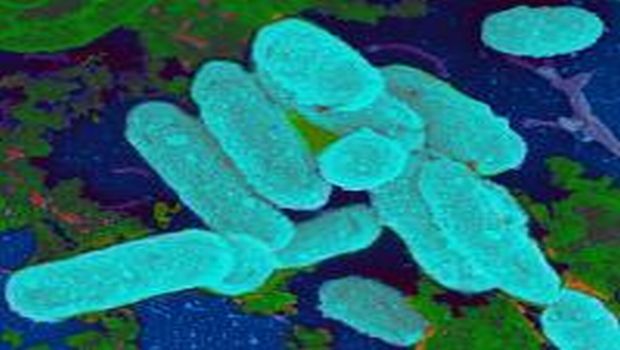Scientist Finds Link Between Antibiotics, Bacterial Biofilms and Chronic Infections
Researchers from the University of Southern California and the Oak Crest Institute of Science have discovered the link between antibiotics and bacterial biofilm formation leading to chronic lung, sinus and ear infections. The study results, published in the current issue of PLOS ONE, illustrate how bacterial biofilms can actually thrive, rather than decrease, when given low doses of antibiotics.


The bacteria called non-typeable Haemophilus influenzae are a common cause of infection in the upper respiratory tract. By attaching to surfaces in the body the bacteria form a biofilm. Wu et al. have reported that when the bacteria encounter non-lethal amounts of specific antibiotics they are stimulated to form a bioiflm, a structure that causes chronic infection and which can be highly resistant to antibotics. Image courtesy of Paul Webster, PhD.
Researchers from the University of Southern California and the Oak Crest Institute of Science have discovered the link between antibiotics and bacterial biofilm formation leading to chronic lung, sinus and ear infections. The study results, published in the current issue of PLOS ONE, illustrate how bacterial biofilms can actually thrive, rather than decrease, when given low doses of antibiotics.
"This research addresses the long standing issues surrounding chronic ear infections and why some children experience repeated ear infections even after antibiotic treatment," says Paul Webster, PhD, lead author, senior staff scientist at USC and senior faculty at the Oak Crest Institute of Science. "Once the biofilm forms, it becomes stronger with each treatment of antibiotics."
During the study, non-typeable Haemophilus influenzae (NTHi) bacteria a common pathogen of humans was exposed to non-lethal doses of ampicillin, a class of antibiotics commonly used to treat respiratory, sinus and ear infections, or other beta-lactam antibiotics. The dose of the antibiotic was not enough to kill the bacteria which allowed the bacteria to react to the antibiotic by producing glycogen, a complex sugar often used by bacteria as a food source, to produce stronger biofilms when grown in the laboratory.
Biofilms are highly structured communities of microorganisms that attach to one another and to surfaces. The microorganisms group together and form a slimy, polysaccharide cover. This layer is highly protective for the organisms within it, and when new bacteria are produced they stay within the slimy layer. With the introduction of antibiotic-produced glycogen, the biofilms have an almost endless food source that can be used once antibiotic exposure has ended.
There are currently no approved treatments for biofilm-related infections. Therefore, bacteria forced into forming stronger biofilms will become more difficult to treat and will cause more severe chronic infections. Adults will suffer protracted lung infections as the bacteria hunker down into their protective slime, and children will have repeated ear infections. What may appear to be antibiotic resistance when an infection does not clear up may actually be biofilms at work.
Webster believes modern medicine needs to find ways of detecting and treating biofilm infections before the bacteria are able to form these protective structures. The difficulties of treating biofilm infections, which can be up to 1,000 times more resistant to antibiotics, have prompted some physicians to propose a gradual move away from traditional antibiotic treatments and toward non-antibiotic therapies.
"If antibiotics are to continue to be relevant for treating bacterial infections it is important that their effects on biofilms be explored," says Webster. "One step in this direction would be to develop routine screening methods to test the effects of antibiotics on in vitro formed biofilms."
Source: Oak Crest Institute of Science
The Sterile Processing Conference Survival Guide: How to Make the Most of Your Next Event
March 25th 2025From expert speakers to cutting-edge tools, sterile processing conferences, like the 2025 HSPA Annual Conference and the SoCal SPA's Spring Conference, offer unmatched opportunities to grow your skills, expand your network, and strengthen your department's infection prevention game.
Redefining Material Compatibility in Sterilization: Insights From AAMI TIR17:2024
March 24th 2025AAMI TIR17:2024 provides updated, evidence-based guidance on material compatibility with sterilization modalities. It offers essential insights for medical device design and ensures safety without compromising functionality.